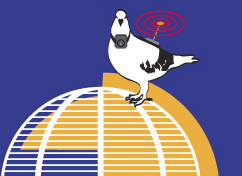art and science, art and biology, new species, extended body, semi-living, partial life, tissue culture, tissue engineering The biomass of disassociated living cells and tissues is in the thousands of tons. These fragments do not fall under current biological or cultural classifications. The notion of the extended body can be seen as a way to define this category of life, while at the same time attempting to destabilise some of the rooted perceptions of classification of living beings. The extend body can and is an amalgamation of the human extended phenotype with tissue life - a unfiled body for disembodied living fragments, an ontological device, set to draw attention to the need of re-examining current taxonomies and hierarchical perceptions of life.
Abstract A rough estimate would put the biomass of living cells and tissues, which are disassociated from the original bodies which once hosted them, in the thousands of tons. In addition, there are many tons of fragments of bodies (cells, tissues, organs) that are maintained in suspended animation in cryogenic conditions. All of which requires an intensive technological intervention to prevent transformation to a non-living state. This type of beings (or semi-beings/semi-living) does not fall under current biological or even cultural classifications. The notion of the extended body can be seen as a way to define this category of life, maintaining the need for classification, while at the same time attempting to destabilise some of the rooted perceptions of classification of living beings. Much of this living biological matter can, in theory, be co-cultured, and fused (cell fusion), or shares with each other its sterile environment (in varying degrees of success). Age, gender, race, species and location do not play the same roles in the extended body as with other living bodies. Research is being contacted at the moment in trying to co-culture animal and plant cells. This means that, in theory, every tissue in every living being has the potential to become part of this collection of living fragments. Thacker asks: "Can there be a politics that effectively takes into account these nonhuman actants, entities that are much more than inert objects and yet much less than autonomous organisms? How can we keep from falling into the too easy habit of reducing all actants to agential origins (e.g., the notion that, yes, there are these nonhuman machines, but ultimately humans design and operate them)?" TC&A's extended body is a small step towards answering Thacker's question. The extend body can be seen as an amalgamation of the human extended phenotype with tissue life - the fragmented body that can only survive by technological means, and be something more then human life: a unfiled body for disembodied living fragments, an ontological device, set to draw attention to the need of re-examining current taxonomies and hierarchical perceptions of life. The extended body is by no means a fixed, scientifically binding order; it is rather a soft, artistic and conceptual view of the subject of technologically mediated and augmented life. URLS:
http://www.tca.uwa.edu.au |
